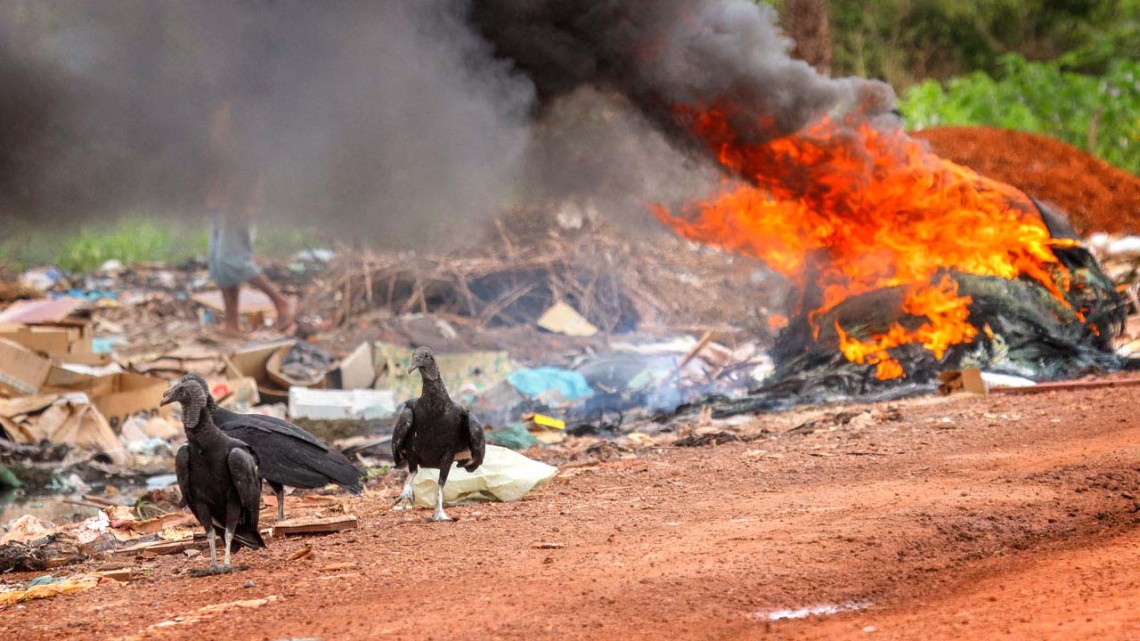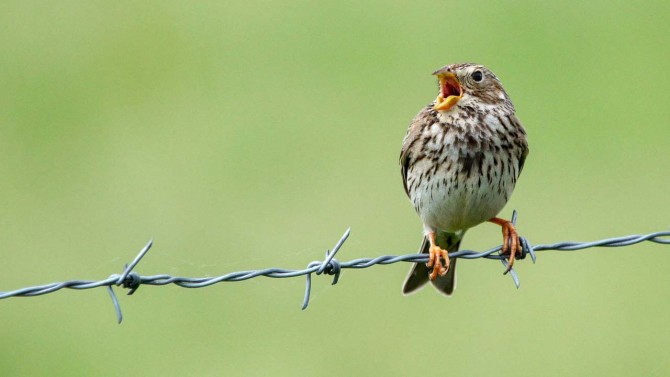
American Black Vultures in Maranhão, Brazil.
Global bird populations steadily decline
Staggering declines in bird populations are taking place around the world, according to a study from scientists at multiple institutions published May 5 in the journal Annual Review of Environment and Resources.
Loss and degradation of natural habitats and direct overexploitation of many species are cited as the key threats to avian biodiversity. Climate change is identified as an emerging driver of bird population declines in the study, “State of the World’s Birds.”
“We are now witnessing the first signs of a new wave of extinctions of continentally distributed bird species,” said lead author Alexander Lees, senior lecturer at Manchester Metropolitan University in the United Kingdom and also an associate researcher at the Cornell Lab of Ornithology. “Avian diversity peaks globally in the tropics and it is there that we also find the highest number of threatened species.”
The study finds approximately 48% of existing bird species worldwide are known or suspected to be undergoing population declines. Populations are stable for 39% of species. Only 6% are showing increasing population trends, and the status of 7% is still unknown. The study authors reviewed changes in avian biodiversity using data from the International Union for Conservation of Nature’s “Red List” to reveal population changes among the globe’s 11,000 bird species.
The findings mirror the results of a groundbreaking 2019 study which determined that nearly 3 billion breeding birds have been lost during the past 50 years across the United States and Canada. The lead author of that study is also an author on this global status report.
“After documenting the loss of nearly 3 billion birds in North America alone, it was dismaying to see the same patterns of population declines and extinction occurring globally,” says conservation scientist Ken Rosenberg of the Cornell Lab, now retired. “Because birds are highly visible and sensitive indicators of environmental health, we know their loss signals a much wider loss of biodiversity and threats to human health and well-being.”
Despite their findings, study authors say there is hope for avian conservation efforts, but transformative change is needed.
“The fate of bird populations is strongly dependent on stopping the loss and degradation of habitats,” Lees said. “That is often driven by demand for resources. We need to better consider how commodity flows can contribute to biodiversity loss and try to reduce the human footprint on the natural world.”
“Fortunately, the global network of bird conservation organizations taking part in this study have the tools to prevent further loss of bird species and abundance,” Rosenberg said. “From land protection to policies supporting sustainable resource use, all of it depends on the will of governments and of society to live side by side with nature on our shared planet.”
This study was conducted by scientists from Manchester Metropolitan University, the Cornell Lab of Ornithology, Birdlife International, the University of Johannesburg, Pontifical Xavierian University and the Nature Conservation Foundation.
Media Contact
Get Cornell news delivered right to your inbox.
Subscribe

